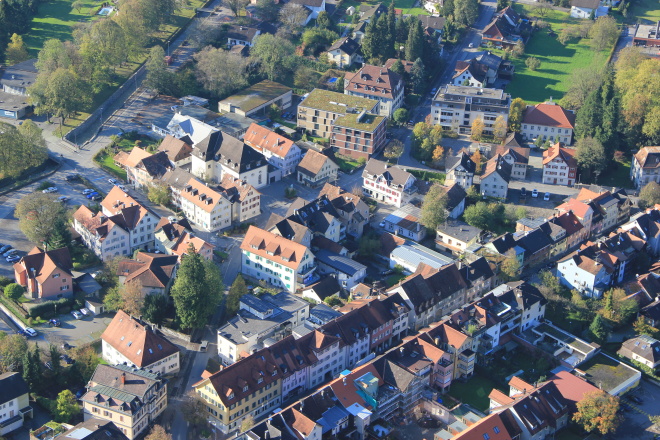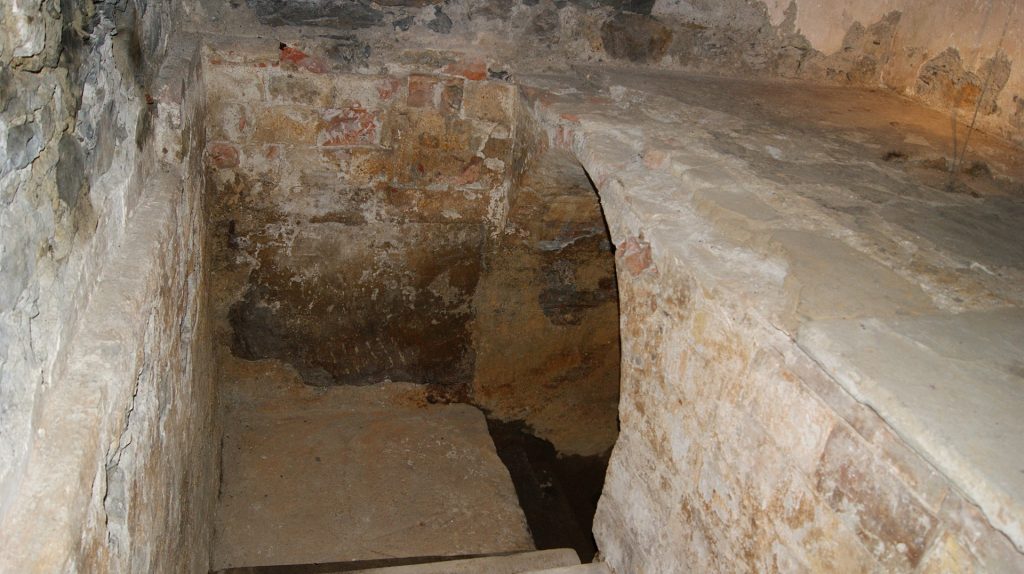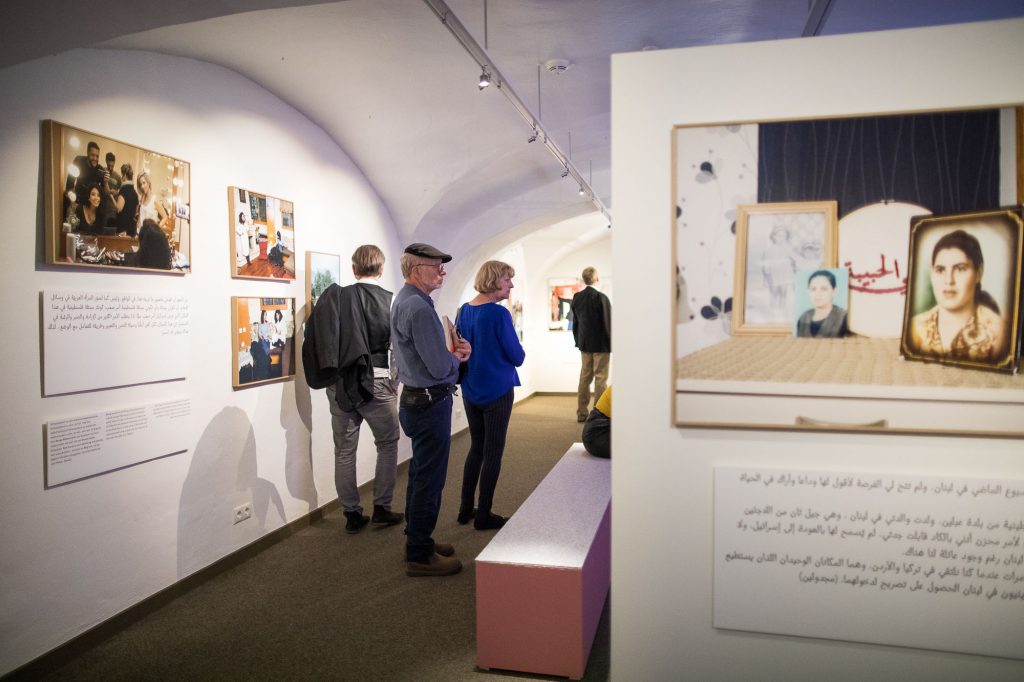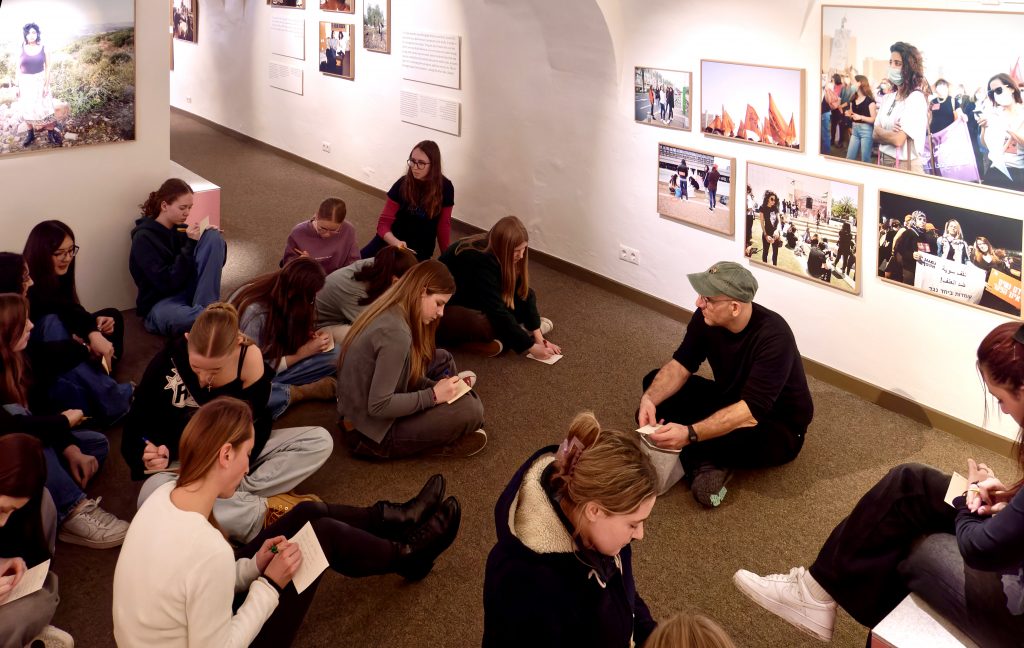The city of Hohenems is located in the Vorarlberg region. In 1617, a ducal charter of privileges put a dozen Jewish families who had fled to Hohenems from Burgau on an equal footing with the Christian burghers in most respects. By the middle of the seventeenth century, the community had increased to around 30 families.

Eight years after Hohenems had passed to Austrian rule (1765), there were 227 Jews (10% of the local population), living in 24 houses, concentrated in one street -Judengasse- constituting a separate municipal body. A government edict promising protection for the Jews was issued in 1769. Under Bavarian rule (1805-14), the community was ordered to incorporate with the township (1813). Until 1848, there were frequent strife between the Jewish community and the township over the question of taxation. Since they were prohibited from doing business in Vorarlberg province, Hohenems Jews became successful merchants in Switzerland and Italy. During the period from 1849 to 1878, the Jewish community was reconstituted as a municipality with its own mayor.
A hevra kadisha was founded in 1769, and a synagogue in 1772. The community possessed its own elementary school (1784), mikveh, slaughter house, and boasted 22 charitable and cultural foundations. In the middle of the 19th century, many Hohenems Jews emigrated to the United States. By 1860 the community had diminished by half. After the constitution allowed of 1867 allowed Jews to settle freely in Austria, the community declined rapidly in number, from 455 in 1865 and 221 in 1869 to 165 in 1878. By 1939 only 10 Jews remained in Hohenems. The synagogue was severely damaged in 1838, and in 1940 the remaining Jews were deported to Vienna. Today, only one Jew remains in Hohenems. Note that among the city’s most prominent citizen was Solomon Sulzer, the Vienna hazzan.
The synagogue
The synagogue was erected in 1771 according to the plans of Peter Bein, the baroque master builder from Bregenzerwald. The imposing cylindrical vault construction of the hall represents an early and unique example of a late classicistic baroque rural synagogue.
The furnishings in the interior of the synagogue corresponded to the general guidelines for synagogues of this time, but boasted particular characteristics: The ceiling paintings were not ornamentally abstract paintings as usually found in synagogues, but rather figurative representations. Themes were the creation of light (above the recital lectern in the east of the synagogue), the revelation of Mount Sinai and a sea of clouds with flashes of lightning in the centre of the synagogue. On the north and south walls of the synagogue, there were five medallions with representations from synagogue culture.
Initial modification of the synagogue took place between 1863 and 1867 according to the plans of the Swiss architect Felix Wilhelm Kubly. The changes included the erection of a new holy shrine and a pulpit, new seats for the rabbi, the choirmaster, and the community councillor, and the replacement of the lectern from the middle of the room to a podium in front of the Torah shrine. A new gallery was built for the choir and the harmonium, which was sponsored by Salomon Sulzer.
Although the synagogue was spared of infringement in the pogrom on the night of November 9, 1938 (“Night of Broken Glass”), after the enforced disintegration of the Jewish community, the community of Hohenems carried out the long awaited takeover of the building in September 1940. The plans for the modification of the synagogue were not carried out during the period of the Nazi regime. By November 17, 1938, all objects of ritual in the synagogue had already been confiscated anyway. A detailed documentation of inventory lists the objects which have since gone missing.

After the return of the building to the Jewish cultural community in Innsbruck from the French administration in the years after the war, the community in Hohenems decided to buy the building of the former synagogue and convert it into a fire station. By the time of the conversion in 1954/55, all elements which were reminders of the building’s function as a synagogue had been destroyed. With the installation of a hollow block ceiling the former prayer room was divided into two floors. The ceiling fresco and parts of the arched ceiling were removed as were all sacral elements of the outer façade.
The arched windows as well as the oval windows positioned above them were replaced by cornered ones. Since then, three garage doors have dominated the east façade, where once an apse emphasized the torah shrine inside. Instead of the belfry, a hose tower was installed measuring the entire height of the building. The building was used as a fire station until 2001.
The mikveh
The Hohenems mikveh was erected in 1829 according to the plans of the Bregenz master builder Ensle and is a typical construction of the early 19th century. Sanitary regulations affecting large areas of life had rendered necessary the replacement of the old community mikvah—damaged by water penetration—beneath the synagogue. The modest new building next to the school included a small dressing room and the ritual bath with a staircase down to the ground water. The mikvah could be heated and was by then probably used only by women.
We do not know for how long the Hohenems mikvah was in use. The significance of religious laws and traditions were on the wane in Hohenems by 1900. However, use until the last decades of the 19th century is quite likely. After 1938, the mikvah, like all other buildings of the Jewish community, was “Aryanized.” In the end, following restitution to the Jewish community after the war, the building was sold, the underground bath covered, and the space used as a workshop. In 1996, the pool was excavated again and in 2009, the building was restored. Today, the ground water level is too low as to allow for the use as a bath.
Today, the historical mikvah in the “Schulgasse” in the Jewish quarter is a showcase of its history that serves as an extension of the Jewish Museum. If you want to visit the mikvah, please come to the Museum’s desk.
The Jewish school
In the second half of the 19th century, the Jewish school in Hohenems became symbol of the controversial political-cultural cooperation across cultural and denominational boundaries. In the schoolhouse, erected by the Jewish community between 1824 and 1828, an educational institution evolved that enjoyed an excellent reputation far beyond Hohenems.
From the end of the 18th century, Jewish children in Hohenems were taught at the German-language “normal school.” Henceforth, the school was also to meet the increased educational requirements of an internationally intertwined community. The liberal social climate in Hohenems around 1850 paved the path for institutions such as the Café Kitzinger, the choral society “Frohsinn”, and eventually the Jewish school to become places where Jews and Christians would meet on an equal footing, at least for a while.

Its success could not prevent this liberal project from eventually failing before World War I. In 1896, the Vorarlberg State Diet prohibited Catholic children from attending the school; Christian-Social anti-Semitism was gaining ground. Additionally, since 1860, the Jewish community had been shrinking as a result of emigration; hence, the number of Jewish pupils was on a continuous decline as well. The school closed in 1913.
The building’s “Aryanization” occurred only after 1938. The Jewish school building was restituted after the war, then resold, and remained for a long time property of the market town, which, from the 1970s onward, accommodated labor migrants in this building. Following extensive discussions regarding the building’s future—in 1980 it was also a possible seat of a Jewish museum—the Jewish School was eventually lavishly renovated in 2009 by the “Jüdische Schule KG,” funded by a private initiative; today, it houses the Restaurant Moritz and the Federmann Cultural Auditorium.
The Jewish cemetery
The Jewish cemetery in Hohenems is as old as the first settlement of Jewish people, dating to 1617. There might be more than 500 graves in total. 370 gravestones remain preserved today.
In 1938, the cemetery was confiscated by the National-Socialist authorities. And in November 1938 some of the gravestones were vandalized.
After the war, the cemetery, having survived the era of the Nazi regime without substantial damage, was restituted and then bought from the Jewish community of Innsbruck by a group of descendants of Jewish families from Hohenems who lived near the Austrian border in the canton of St. Gall, Switzerland. This group founded the ‘Verein zur Erhaltung des jüdischen Friedhofs in Hohenems’ (association for the maintenance of the Jewish cemetery in Hohenems) in 1954. Although the Jewish community of Hohenems was dissolved, the Jewish cemetery still exists. Various people have been buried here since then and some descendants and Jews living in Vorarlberg today have already reserved graves for the future.

In recent years, the Jewish Museum of Hohenems has compiled a detailed survey of the cemetery, a photographic documentation of all still existing gravestones, a registration of the German and Hebrew inscriptions (with translation in German) and an artistically historical description of the most interesting gravestones. On the basis of this data, an electronic database (click here to visit it) was compiled, containing the name, grave number and inscription (including the translation) of all existing gravestones.
Visitors wishing to see the cemetery are kindly ask to show up at the museum’s desk in order to borrow the key.
The Jewish Museum
Suprinsingly enough, Hohenems hosts one of the most dynamic Jewish museums in Europe. While the permanent exhibit documents the achievements of the Jews in Hohenems since the 17th century, the museum does not attempt an exhaustive presentation of Jewish history, along the lines of what one finds in Berlin or Warsaw. Practically speaking, this means that the museum is free to extend resources on innovative and unexpected temporary shows. Some of the exhibitions traveled the world, such as an impressive survey of Jewish kitsch, called “Schlock Shop,” and a much-talked of show about the Jews of the Austro-Hungarian Empire, called “The First Europeans. Habsburg and other Jews — a World Before 1914.”
Each decade, the museum hosts a reunion of Hohenems descendants. The last one, in 2017, gathered 400 people from the United States, Italy and Switzerland.
Sources: Jewish virtual library, Hohenems Jewish Museum, The Forward.